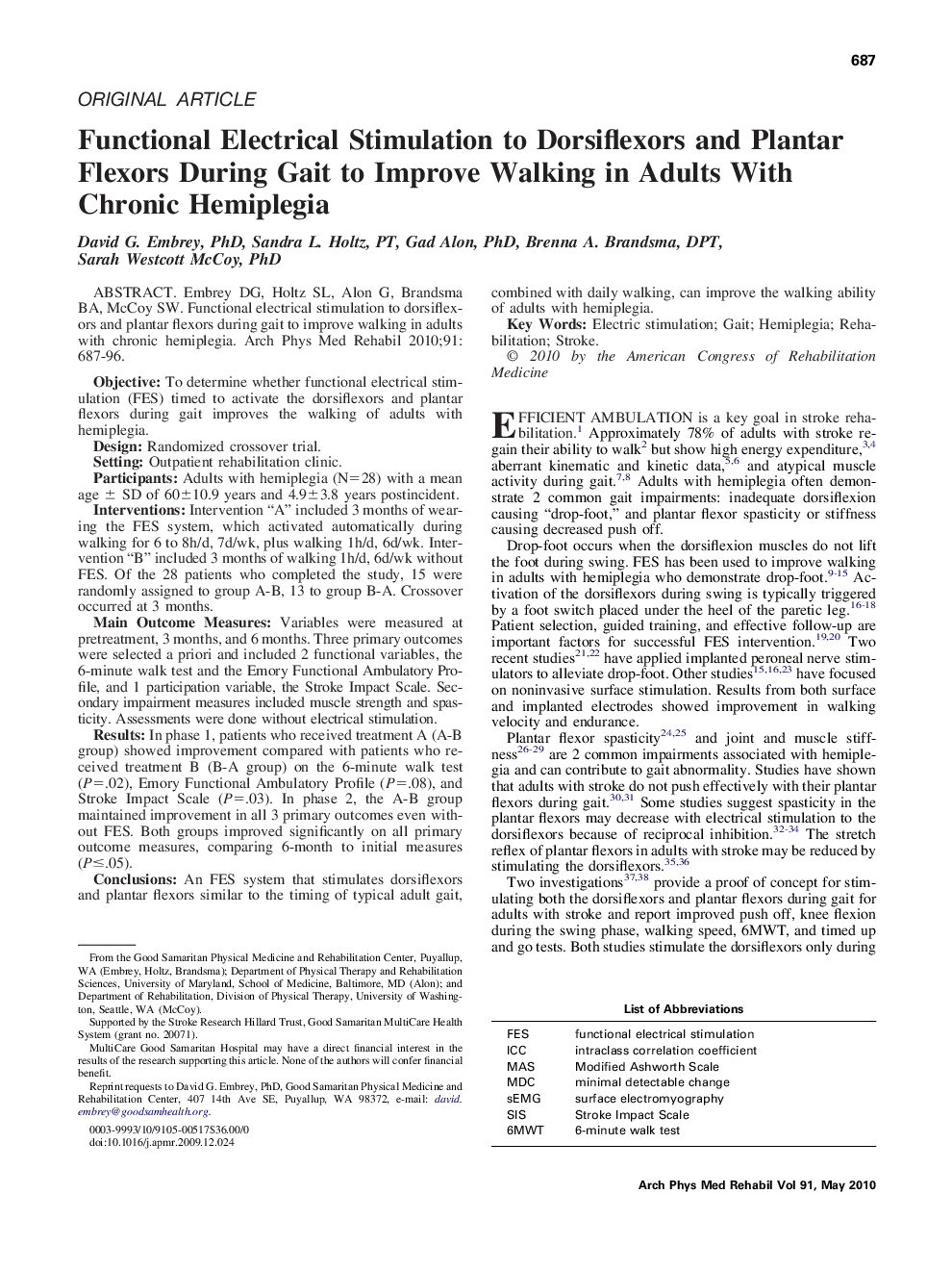| کد مقاله | کد نشریه | سال انتشار | مقاله انگلیسی | نسخه تمام متن |
|---|---|---|---|---|
| 3451244 | 1595753 | 2010 | 10 صفحه PDF | دانلود رایگان |

Embrey DG, Holtz SL, Alon G, Brandsma BA, McCoy SW. Functional electrical stimulation to dorsiflexors and plantar flexors during gait to improve walking in adults with chronic hemiplegia.ObjectiveTo determine whether functional electrical stimulation (FES) timed to activate the dorsiflexors and plantar flexors during gait improves the walking of adults with hemiplegia.DesignRandomized crossover trial.SettingOutpatient rehabilitation clinic.ParticipantsAdults with hemiplegia (N=28) with a mean age ± SD of 60±10.9 years and 4.9±3.8 years postincident.InterventionsIntervention “A” included 3 months of wearing the FES system, which activated automatically during walking for 6 to 8h/d, 7d/wk, plus walking 1h/d, 6d/wk. Intervention “B” included 3 months of walking 1h/d, 6d/wk without FES. Of the 28 patients who completed the study, 15 were randomly assigned to group A-B, 13 to group B-A. Crossover occurred at 3 months.Main Outcome MeasuresVariables were measured at pretreatment, 3 months, and 6 months. Three primary outcomes were selected a priori and included 2 functional variables, the 6-minute walk test and the Emory Functional Ambulatory Profile, and 1 participation variable, the Stroke Impact Scale. Secondary impairment measures included muscle strength and spasticity. Assessments were done without electrical stimulation.ResultsIn phase 1, patients who received treatment A (A-B group) showed improvement compared with patients who received treatment B (B-A group) on the 6-minute walk test (P=.02), Emory Functional Ambulatory Profile (P=.08), and Stroke Impact Scale (P=.03). In phase 2, the A-B group maintained improvement in all 3 primary outcomes even without FES. Both groups improved significantly on all primary outcome measures, comparing 6-month to initial measures (P≤.05).ConclusionsAn FES system that stimulates dorsiflexors and plantar flexors similar to the timing of typical adult gait, combined with daily walking, can improve the walking ability of adults with hemiplegia.
Journal: Archives of Physical Medicine and Rehabilitation - Volume 91, Issue 5, May 2010, Pages 687–696